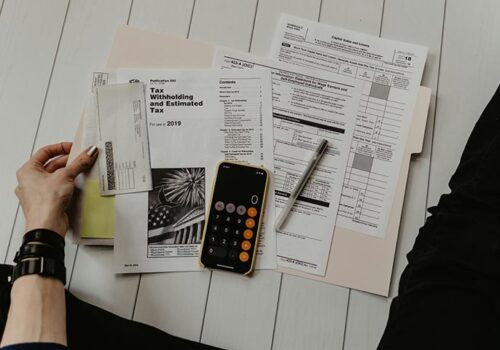What Are Discounts and Deals?
Discounts and deals are promotional strategies used by businesses to attract and retain customers. A discount reduces the original price of a product or service, while a deal may include special promotions such as free samples, Buy One Get One Free (BOGO), bundle offers, or cashback rewards.
Why Businesses Offer Discounts:
Attracting New Customers – Discounts encourage first-time buyers to try a brand.
Clearing Inventory – Seasonal and surplus stock is sold quickly through discounts.
Encouraging Repeat Business – Loyalty programs reward returning customers.
Competing in the Market – Competitive pricing helps brands stand out.
Understanding these reasons helps consumers make informed purchasing decisions.
Types of Discounts and Deals
Businesses use various discount strategies tailored to different situations. Knowing these can help you become a savvy shopper.
1. Percentage Discounts
These are the most common, offering a percentage off (e.g., 10%, 50%) and are popular during seasonal sales.
2. Flat Amount Discounts
Fixed-price reductions (e.g., $20 off) are often applied with minimum spend conditions.
3. Coupons and Promo Codes
Unique codes used at checkout provide discounts. They are often shared via email, websites, or flyers.
4. Buy One, Get One Free (BOGO)
A widely used promotion where a second product is free or available at a reduced price.
5. Bundled Deals
Discounts on a set of items, such as electronic bundles with accessories.
6. Cashback Offers
A portion of the purchase amount is refunded to your bank account, store wallet, or cashback app.
7. Seasonal Sales
Sales events like Black Friday, Cyber Monday, and end-of-season sales offer significant savings.
8. Loyalty Programs
Customers earn points for purchases, which can be redeemed for discounts or free items.
9. Membership Discounts
Retailers offer lower prices for members of subscription or wholesale programs.
Exploring these options can lead to substantial savings.
Where to Find the Best Discounts and Deals
The secret to saving money is knowing where to look. Here are some top sources:
Retail Stores – Look for clearance sales and seasonal promotions.
E-Commerce Platforms – Websites like Amazon, eBay, and Walmart offer daily deals and flash sales.
Coupon Websites – Platforms like RetailMeNot, Honey, and Groupon aggregate discount codes.
Social Media – Follow brands for exclusive promotions and flash sales.
Local Deals and Flyers – Check newspapers, store flyers, and community boards for discounts.
Specialty Deal Apps – Apps like Rakuten, Ibotta, and Shopkick provide cashback and deals.
How to Maximize Savings with Promotional Discounts
To make the most out of deals, follow these strategies:
Plan Purchases – Avoid impulse buying; create a shopping list and stick to it.
Compare Prices – Use tools like Google Shopping to find the best deals.
Stack Discounts – Combine coupons with sales and cashback offers for maximum savings.
Join Loyalty Programs – Memberships often offer additional discounts and exclusive deals.
Shop Off-Season – Buy items like winter clothes in summer for better prices.
Stay Updated – Subscribe to brand newsletters for early access to promotions.
Negotiate Prices – In local stores or bulk purchases, asking for a discount can work.
Be Patient – If an item isn’t urgent, monitor its price over time for a better deal.
Common Pitfalls to Avoid When Shopping with Discounts
While deals can save money, they can also lead to overspending. Here’s what to watch out for:
Buying Unnecessary Items – Only purchase what you need.
Misleading Discounts – Some retailers inflate prices before applying discounts. Research historical prices.
Hidden Costs – Check for shipping fees, taxes, or membership costs.
Expiring Coupons – Be mindful of expiry dates to avoid missing out.
Overcommitting to Loyalty Programs – Don’t overspend just to earn rewards.
Real-World Case Studies: Success Stories with Discounts
Case Study 1: Black Friday Electronics Haul
Jessica, a college student, needed a laptop and accessories. She waited for Black Friday and scored a 40% discount, plus a free wireless mouse. By using a cashback app, she saved an extra 10%, totaling over $300 in savings.
Case Study 2: Grocery Savings Through Coupons
Mark, a father of three, strategically used digital and printed coupons alongside in-store promotions. Over a year, he saved nearly $1,500, which he redirected towards a family vacation.
The Psychology Behind Discounts
Why do discounts feel so rewarding? It’s all about psychology. Savings trigger the brain’s reward system, creating a sense of accomplishment. Retailers exploit this by using time-sensitive offers like “Limited Stock” or “Flash Sale” to create urgency and encourage impulse buying. Understanding this can help shoppers make more rational decisions.
Technology’s Role in Finding the Best Deals
Modern technology has made deal-hunting easier. Here’s how:
Price Tracking Tools – Websites and apps notify you when prices drop.
AI-Powered Recommendations – Retailers use AI to suggest deals based on your shopping habits.
Augmented Reality (AR) Shopping – Some brands offer AR deals via mobile apps.
Blockchain and Cryptocurrency Discounts – Certain platforms provide additional savings for crypto payments.
Conclusion
Understanding discounts and deals allows you to shop smarter and save money. By knowing where to find deals, how to optimize discounts, and avoiding common pitfalls, you can make the most of your shopping experience. Whether it’s using coupons, leveraging technology, or planning purchases strategically, a well-informed shopper always gets the best value.







